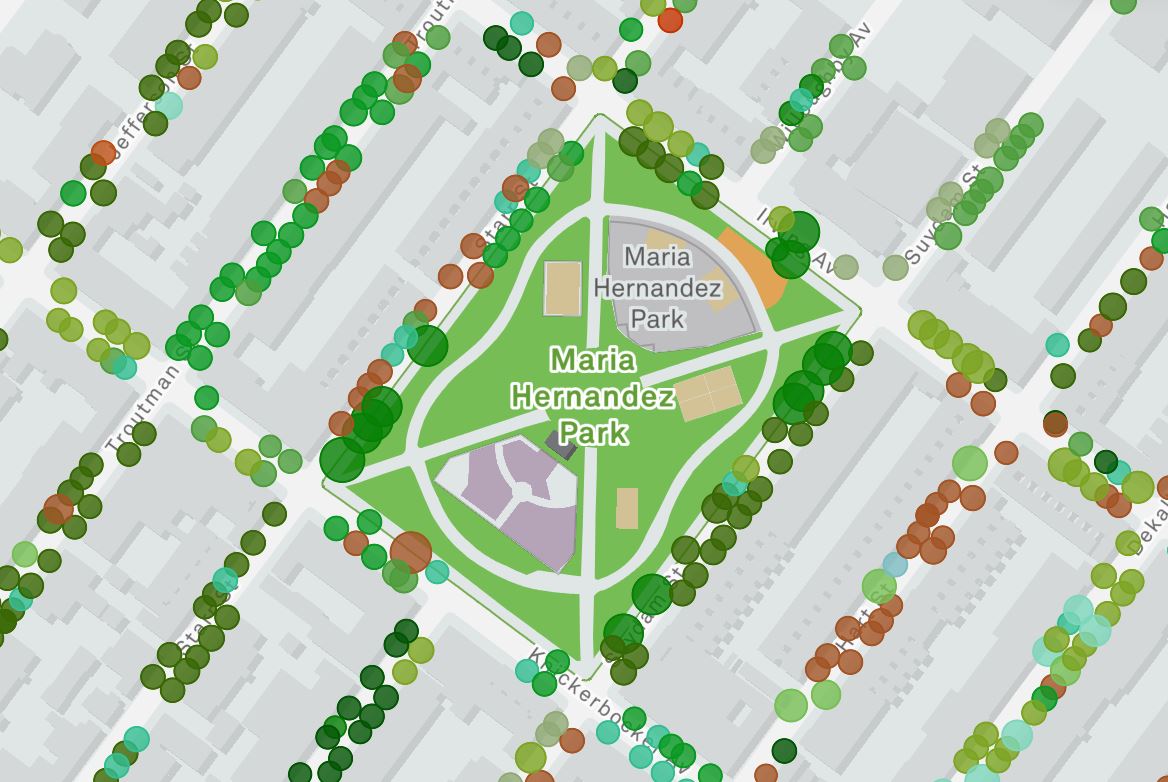New York City may have lost a lot of trees since its early founding, but there’s signs of hope in the Big Apple with the new “New York City Street Trees Mapper.” The city’s latest tree census includes, “the world’s most accurate and detailed map of a city’s street trees,” and it’s ushering in a new wave of environmental stewardship.
Find this tool and other New York City tools here!
As one of the most massive, interactive city tree maps ever built, some 2,300 volunteers assisted park officials in surveying over 692,000 trees. Walking from street to street through all five boroughs, volunteers recorded everything from species and trunk width to even bark health. Each tree was then carefully marked with GPS coordinates, identifying the exact location of every tree in NYC.
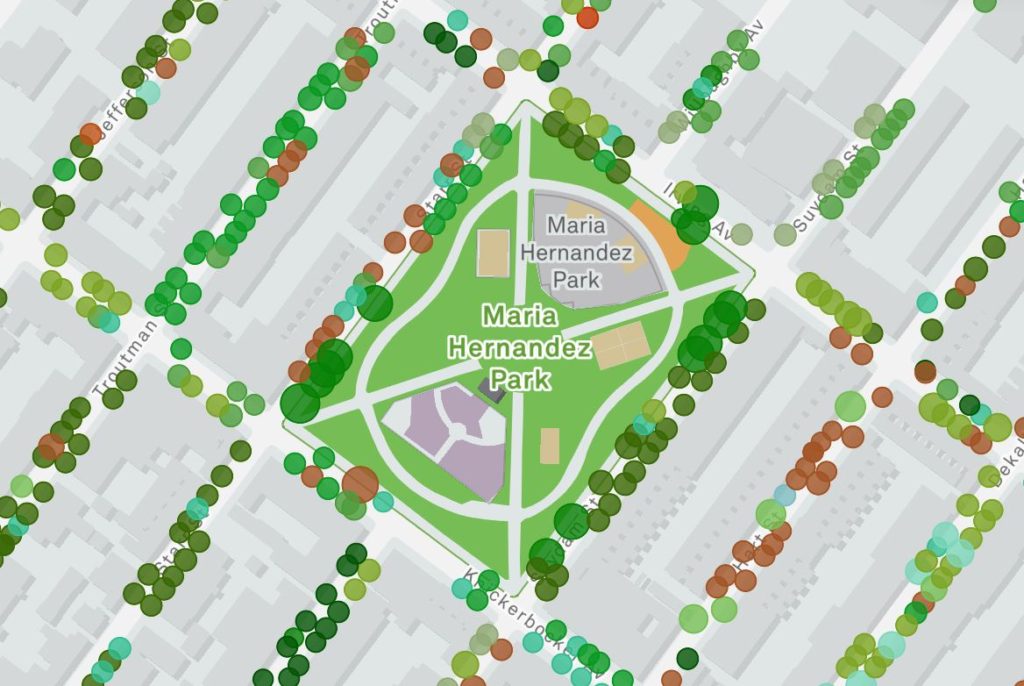
Citywide Statistics For New York City Street Trees
Trees on Map: 692,892
Activities Reported: 28,245
Trees Favorited: 7,274
Tree Species on Map: 233
Most Common Species: London Planetree – 85,450 trees equals 12% of trees on the map
The map has been a great asset for the parks department, who use it to identify sickly trees and needed maintenance work for New York City street trees. But an even bigger contribution to the city however, is that everyday, average New Yorkers can take a more invested approach to the very trees that surround them.
Using The New York City Street Trees Mapper
Using the New York City Street Tree Map is pretty straightforward and has a number of interactive features available.
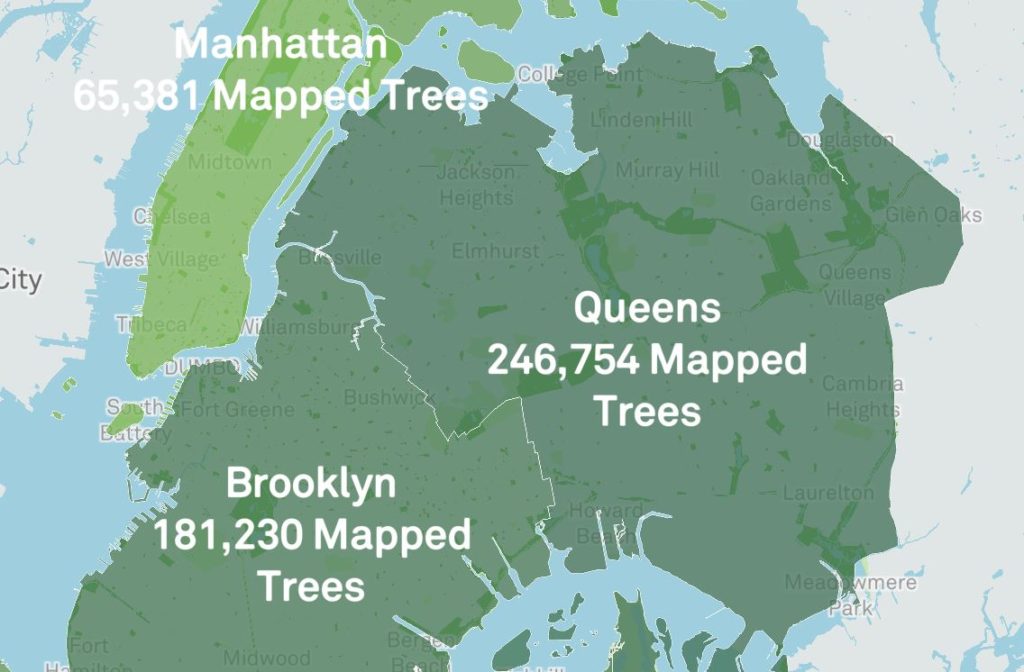
Use The Interactive Map To Visualize All Of The Trees That Grow In New York
Zoom in or type in an address to find a desired location. Click on any one tree and it’ll instantly pull up a tree profile highlighting tree characteristics, tree care activities, and ecological benefits for trees native to NYC.
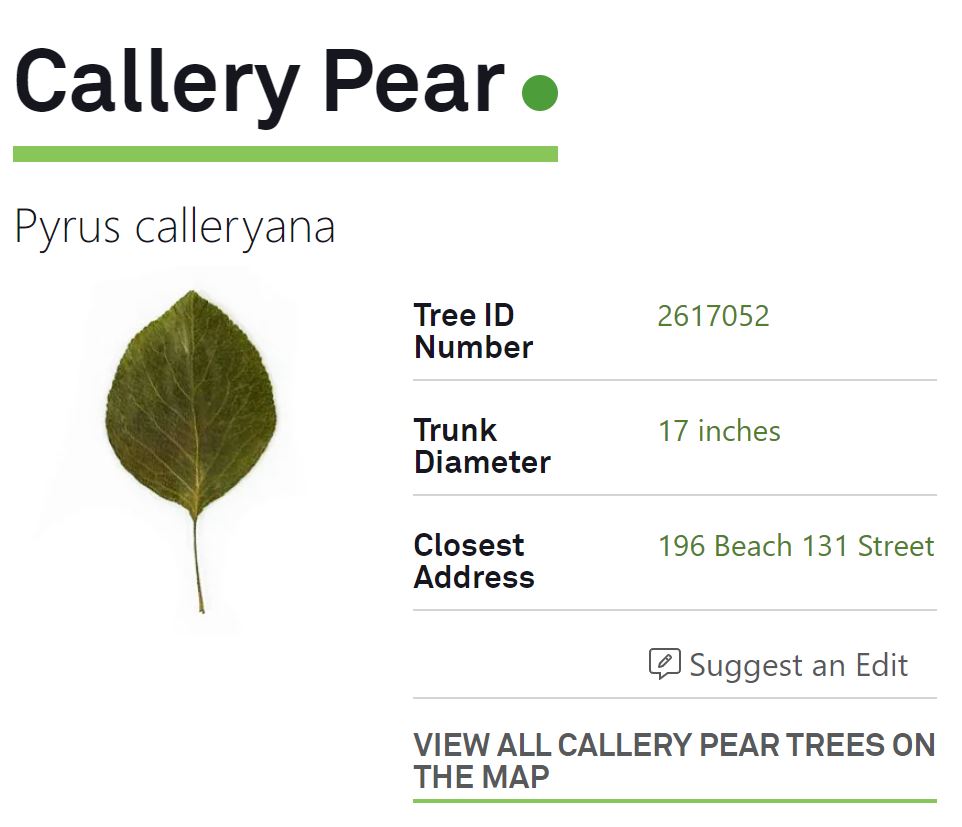
See Tree Characteristics For Every Tree
Type: Pyrus Calleryana
Trunk Diameter: 17 inches
Closest Address: 196 Beach 131 Street
Care For The NYC Tree Canopy
Click on a tree and add it to your favorites — find your list under My Trees. Record your activities and view charts measuring your level of care. This will require registration.
Is there an issue with one of your trees? Click “report a problem” and make a service request for the tree.
Join A Tree Group Using The NYC Street Tree Guide
Join one of several tree groups across the City and see your activities on the map. See activities over time, group statistics, and recent tree care activities.
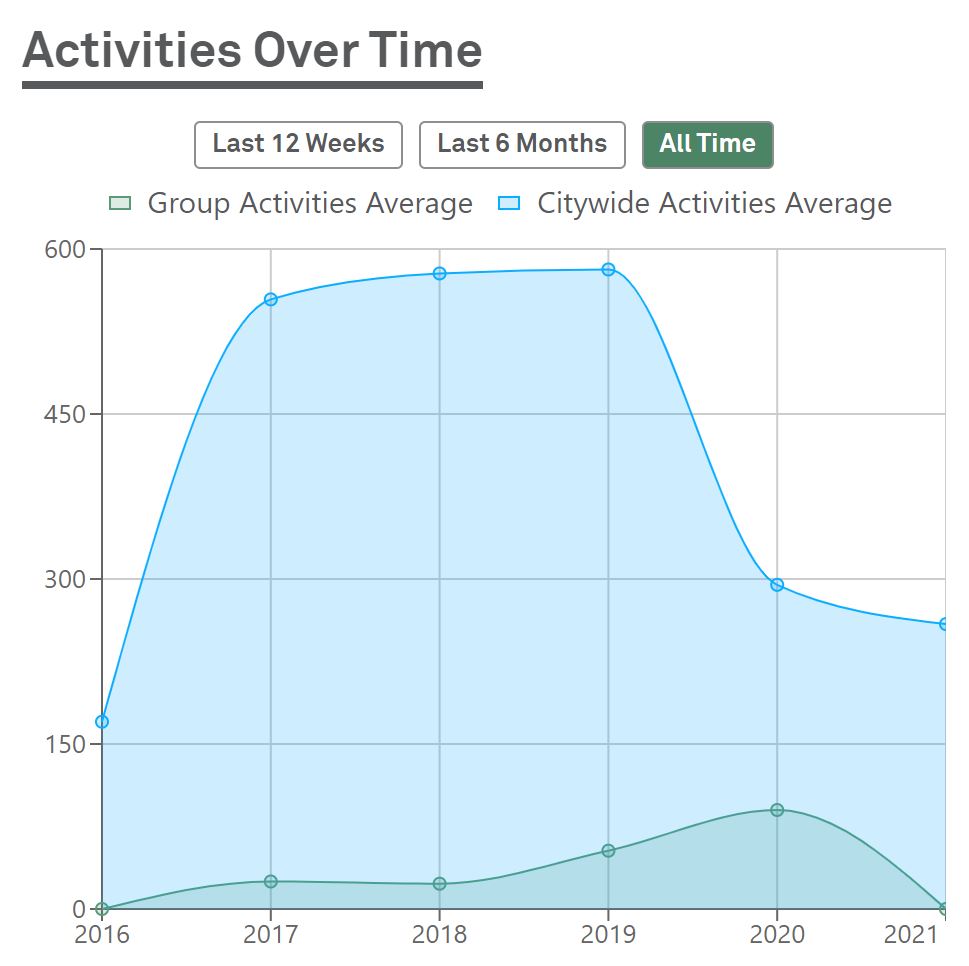
View Group Statistics
Activities Over Time
Members On Tree Map
Activities Reported
Trees Favorited
Recent Tree Care Activities
The Importance Of Mapping New York City Street Trees
Our urban canopies are aesthetically pleasing, yes, but they also offer a number of environmental benefits.
The NYC Street Tree Mapper allows the city to identify and measure those benefits on a singular basis. Acting as a “field guide” or “directory” of sorts, the map can accurately estimate stormwater benefits, clean air benefits, energy benefits, and carbon storage benefits for each tree within city limits.
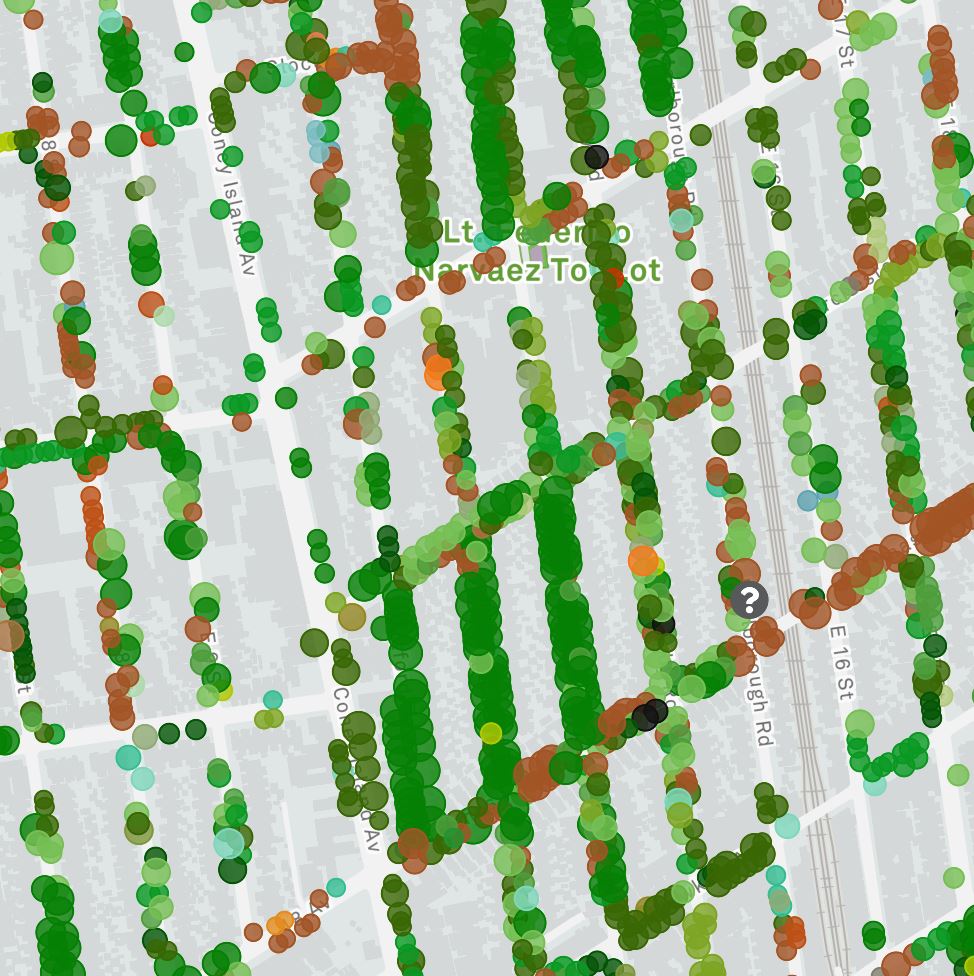
Stormwater intercepted each year in NYC
Gallons: 1,077,053,910; Value: $10,662,828.33
Energy conserved each year in NYC
kWh: 662,975,528; Value: $83,697,267.9
Air pollutants removed each year in NYC
Pounds: 1,259,991; Value: $6,588,091.37
Carbon dioxide reduced each year in NYC
Tons: 1,210,482,019; Value: $4,042,980.89
Stormwater Benefits
Urban stormwater can be extremely toxic for neighboring bodies of water. Wetlands, oceans, lakes, and streams suffer from stormwater runoff every year. Urban trees, which essentially soak up water or evaporate it before hitting the ground, reduce the volume of runoff and greatly delay the time of peak flow.
Clean Air Benefits
Air pollution is a serious concern in the City and regularly exacerbates health issues such as asthma, headaches, cancer, etc. Without trees and urban forests, these underlying issues become exponentially worse.
These benefits include:
- Intercept PM10 (things like dust and smoke)
- Release oxygen through photosynthesis
- Reduce O3 levels/lowers air temperatures through shade
- Reduce evaporative hydrocarbon through shading
- They absorb pollutants
Energy Benefits
Trees do a lot for our living and working spaces. By shading homes, buildings, and cars, we’re able to personally save and reduce our carbon footprint (such as not running the AC constantly).
Carbon Storage Benefits
Fossil fuels are continually adding greenhouse gases into the atmosphere. Human activities, such as vehicular travel, have steadily increased this phenomenon for the past century. Urban forests, like that of NYC, essentially act as storage sights for the gas, greatly reducing the amount of CO2 released into the atmosphere.
NYC Trees Identification Is A “Community Approach” To Tree Care for New York City Street Trees
The NYC Tree Mapper’s primary benefit is that it embraces a “community approach” to adopting, maintaining, and caring for urban trees. Not only can users visualize and identify surrounding trees, but they can interact with them, becoming both physical and virtual stewards of their urban landscape. It is, for all intents and purposes, a community wide initiative that has finally caught up with the modern era!
Find the New York City Street Tree Map here and explore away!
